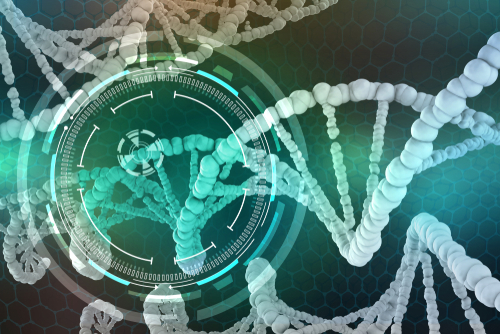EB-101, Potential Cell Therapy for RDEB, Seen to Lead to Sustained Wound Healing in Trial
Written by |

EB-101, a cell therapy candidate from Abeona Therapeutics, induced sustained wound healing lasting for three years or more in a large proportion of people with recessive dystrophic epidermolysis bullosa (RDEB), the long-term follow-up of a Phase 1/2 trial shows.
Data were detailed at the 77th Annual Meeting of the Society for Investigative Dermatology in a presentation titled, “Genetically corrected autologous keratinocyte epidermal grafts improve wound healing and patient reported outcomes in patients with recessive dystrophic epidermolysis bullosa.”
RDEB is caused by defects in the gene COL7A1, which lead to an inability to produce type VII collagen, an important structural molecule in the skin that keeps the epidermis (top layer of the skin) attached to the dermis (the layer below the epidermis).
The lack of collagen makes the skin fragile and prone to frequent blistering.
EB-101 aims to replace the defective COL7A1 gene with a working version, allowing for proper production of type VII collagen. It uses a patient’s skin cells (keratinocytes), which are cultured in the laboratory and modified to produce a functioning type VII collagen protein.
These genetically engineered skin cells are then grown to form sheets that are transplanted onto the patient with the aim of treating the wounds and blisters, and restoring normal type VII collagen expression in the skin.
The completed Phase 1/2 trial (NCT01263379) included seven people with RDEB who were treated with EB-101 between 2013 and 2017.
Each received six individual grafts, for a total 42 grafts among all seven people in the trial. The data presented covered three years of follow-up, though some patients were followed for as long as five years.
The grafts were tested for their wound healing ability, and most (83%) showed 50% or greater wound healing, with two-thirds of these grafts (66%) demonstrating 75% or greater wound healing at three years.
To put that in perspective, only 16% of untreated wounds (serving as controls) showed at least 50% wound healing. (It should be noted that this data came from tests of six control wounds analyzed at one year.)
Wound healing was assessed with the Investigator Global Assessment Scale, which uses skin inflammation criteria to measure such healing.
Importantly, patients reported feeling better: all said there was a “notable improvement” in pain and itchiness, and nearly two-thirds reported having fewer blisters at graft sites. No adverse effects were reported.
Researchers plan to continuing to follow the patients, and a multicenter Phase 3 trial in up to 15 RDEB patients— called VITAL — is expected to open this year. It will compare EB-101 treatment to untreated wounds in the same patient.
The U.S. Food and Drug Administration (FDA) designated the EB-101 program a regenerative medicine advanced therapy (RMAT) in 2018, a recognition to assist and speed the development of promising “regenerative” therapies — cell therapies, tissue engineering, or cell and tissue products. The treatment candidate had already been recognized a rare pediatric disease potential therapy for dystrophic epidermolysis bullosa (DEB), including RDEB, breakthrough therapy designation, and orphan drug designation in the U.S.
EB-101 also received orphan drug designation from the European Medicines Agency in March 2017.





